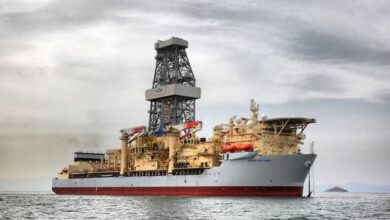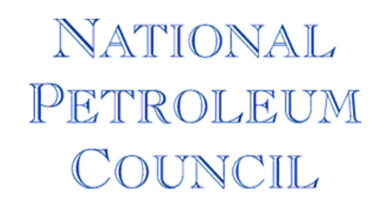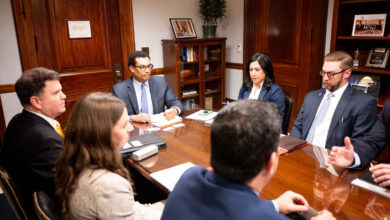Semi mobilization provides lessons on invasive marine species
It brought the realization that this was a much bigger pollution threat than accidental oil spills.
Mr dos Santos said that, with research, came the realization that invasive marine species have become a huge problem, invisible and deadly in their purpose.
“But the nasty effects of this problem are much worse than the problem of oil spills,” he said. “Oil spills might be very visual, but their impact will go away and the marine environment will recover.
“But with invasive species, it’s the other way around. Where they should be tackled, they can’t be seen; when they’re perceived, they’re so big and nasty and they might be there forever.”
Mr dos Santos said the drilling industry in particular has been caught off guard in some specific areas of the world where last-minute changes in rig moves and well programmes have been caused by unforeseen changes to client requirements.

Caulerpa is a tropical seaweed that has wreaked havoc in the Mediterranean and Australia.
He said too that a 2008 article in Drilling Contractor was an eye opener, both to him and probably many others in the drilling business.
Mr dos Santos listed a string of species that were now causing big problems. However, he pointed out that, while rigs had unquestionably contributed, the tendency for units to stay long-term in sectors such as the North Sea or US Gulf of Mexico meant that the impact of mobile offshore drilling units as invasive species vectors was limited compared with merchant ships.
He admitted the decision to closely examine the Noble Farrington before the move from West Africa to the Mediterranean (which is ongoing) had brought many challenges, including assessing the unit to see whether it was carrying potentially invasive species, which it was, though this turned out not to be a significant issue.
However, while the decision was taken not to clean the hull, the rig’s ballast water went through full “ballast water management,” a process that was steered by a strict cost-benefit audit process.
Mr dos Santos said various agencies were also contacted. “They were very helpful in helping us clarify our thoughts, and they were pleased that a drilling contractor had made the effort.
“Lessons have been learned, and possibly some will be added when we do this again in the future. Hopefully the kind of preparations that we carried out will become the norm for rig moves, not just in Noble but the whole of the industry.”




